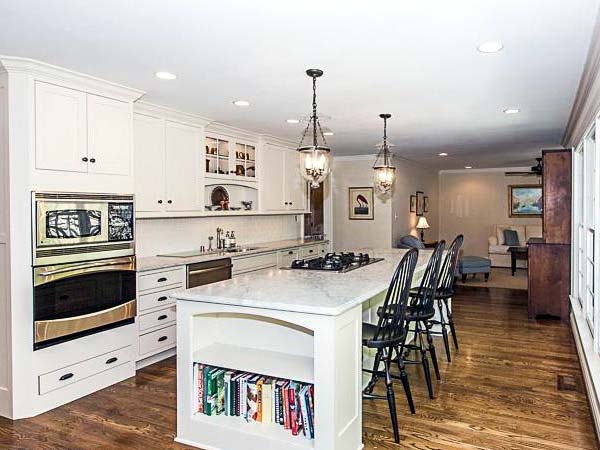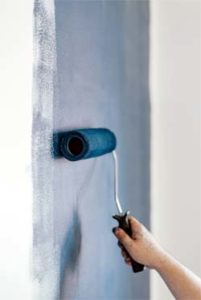Renovating your home can be an exciting project, offering a fresh look and updated features. However, it may inadvertently attract pests like ants, spiders, and roaches. These creatures often emerge from their hiding spots, taking advantage of the disruption caused by construction. Understanding why pests love newly renovated homes can help you take proactive steps to effectively manage these unwelcome guests.

Why Pests Love Newly Renovated Homes
Keeping pests out of your home is something we all want. When undertaking a home renovation this becomes more difficult. To help you we’re going to look at some steps you can take before any construction takes place.
Proactive Measures Before Renovation
To prevent pest issues during or after renovations, consider these proactive steps:
Pre-Renovation Inspection: Have a pest control professional inspect your home before beginning renovation work. They can identify existing pest problems and offer recommendations to minimize pest disruption during construction.
Clear the Areas: Remove food items, dishes, and other attractions from areas where renovations will take place. This reduces the likelihood of pests being drawn to the worksite.
Monitor and Respond: After the renovation is complete, monitor your home for any signs of pest activity. If you notice an increase in pests, address the issue promptly to prevent a larger infestation.
Disruption of Construction
During home renovations, several factors show why pests love newly renovated homes. We’re looking at three main ways this occurs.
1. Disturbance of Existing Nests and Colonies
Renovation often disturbs pest nests and colonies hidden within walls, floors, and ceilings. For instance, ants and roaches may have established nests in these areas, and the renovation process disrupts their habitat. This disturbance forces pests to relocate or become more active, leading them to venture into living spaces where they were previously seen.
2. Introduction of New Entry Points
Construction activities can create new entry points for pests. Gaps, cracks, or holes formed during renovations provide easy access for pests seeking shelter or food. Even smaller openings are enough for ants, spiders, and roaches to enter your home, especially if they are already nearby.
3. Exposure of Hidden Pests
Renovation often exposes pests that were previously hidden. Removing old cabinetry, flooring, or drywall can reveal nests, droppings, or other signs of infestation that were concealed before. This exposure increases the likelihood of noticing pests, even if they were present before the renovation.
Specific Pests Thrive After Renovations
Understanding the specific pests that may become more problematic after a renovation can help you tailor your approach to pest control;
Ants: Ants are notorious for finding new pathways and food sources. When their nests are disturbed, they may relocate or become more aggressive in their search for sustenance. Renovations can disrupt ant trails and nests, causing ants to invade newly exposed areas of your home.
Spiders: Spiders often inhabit quiet, undisturbed areas like attics, basements, and room corners. Renovations involving structural changes or cleaning can disrupt these habitats, driving spiders to seek refuge in more accessible parts of your home.
Roaches: Roaches thrive in dark, damp environments, often hiding in wall voids or under flooring. Renovations can disrupt these hiding spots, leading to increased sightings as roaches search for new places to hide. The mess and debris left from construction can also attract insects, as they are drawn to food and moisture.
How To Manage Pest Issues Post-Renovation
To minimize the risk of pest problems after a renovation, consider the following strategies:
- Seal Entry Points: After renovating, inspect your home for any new or enlarged entry points. Seal any cracks, gaps, or holes that could provide access to pests, particularly around windows, doors, and where pipes or cables enter the home. Proper sealing can help prevent ants, spiders, and roaches from getting inside.
- Maintain Cleanliness: Keep your home clean and free of debris, especially after a renovation. Construction dust and leftover materials can attract pests. Regular cleaning – such as vacuuming and dusting – can reduce the appeal of your home to pests by eliminating potential food sources and nesting materials.
- Address Moisture Issues: Moisture is a major attractant for pests like roaches. Promptly repair any plumbing issues or leaks and ensure your home is well-ventilated. Addressing moisture problems can significantly reduce the likelihood of pest infestations.
- Use Pest Control Services: hiring a professional pest control service can be especially helpful after a renovation. Professionals can conduct a thorough inspection to identify potential problem areas and apply targeted treatments. They can also offer advice on maintaining a pest-free environment moving forward.
Keep Pests Out of Your Newly Renovated Home
While we’ve learned why pests love newly renovated homes we’ve also discovered what steps you can take to get rid of the unwanted visitors. By understanding these factors and taking proactive measures, you can reduce the risk of pest problems and ensure a smooth transition to your newly renovated space. Regular inspections, effective pest control strategies, and prompt action can help keep your home pest-free, allowing you to fully enjoy your renovation without any unwanted guests.
If you’re facing persistent pest issues after a renovation, consider reaching out to a professional pest control service like Greenhouse Termite and Pest Control. They offer tailored solutions to address pest problems and help maintain a comfortable, pest-free home.



